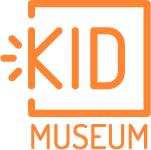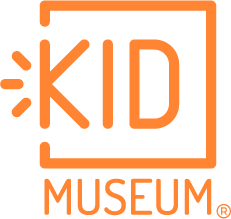Learn about the origins of Reggaeton music and discover some key Reggaeton artists, then create your own original Reggaeton-inspired song.
maker playground
culture spotlight: reggaeton music | middle school
explore
What do you think of when you hear boom-ch-boom-chick? Say it aloud a few times in a row and you’re actually making the signature beat of a popular type of music called Reggaeton. This style of music originated from Puerto Rico and started out being called Underground, because back in the early 1990’s it was mostly played at clubs and was not widely known. Reggaeton has many influences from all over Latin America and the world. The first part of the word Reggaeton, Reggae, refers to a style of music from Jamaica, but Reggaeton is also influenced by Spanish Reggae from Panama, Dancehall from Jamaica, Hip-Hop from New York, Salsa from Cuba, and Bomba also from Puerto Rico.
Once Reggaeton came out from underground and began to be played on the radio, some people thought that this music was inappropriate because the lyrics can contain controversial or violent themes. It’s important to understand that Reggaeton serves as a way for Puerto Rican youth to express their feelings about urban life and social problems like racism, poverty, and crime. Another unique aspect of this music is, unlike other “crossover” music that has become popular in non-Spanish speaking regions, Reggaeton continues to mostly be rapped or sung in Spanish. Currently, Reggaeton has become one of the most listened to music genres around the world and its popularity is still growing. Here are some of the most well known Reggaeton artists:
- Vico C is one of the most iconic Spanish speaking rappers that started Underground music.
- Ivy Queen is one of the most important figures in Reggaeton, making her start earlier than most of her male counterparts and representing the voice of women. The Hispanic Heritage Foundation recognized this pioneering “Queen of Reggaeton” with their 2021 Vision Award.
- Tego Calderón centered blackness in Reggaeton and openly speaks about racial issues in Puerto Rico and Latin America.
- Daddy Yankee is one of the first Underground artists; some say he was the first to use the term Reggaeton. His popular song, Gasolina, helped take this style of music to a worldwide audience.
- Bad Bunny is one of the first Latin Trap artists, a sub-genre or a genre related to Reggaeton. He is one of the most streamed artists around the world, and his painted nails, colored hair, and style of dress break gender norms.
- Karol G is a Reggaeton superstar on the rise. Driven to break genre barriers, she regularly collaborates with platinum artists like Pitbull, Nicki Minaj, and the Jonas Brothers.
Watch this video to learn more about the history and origins of Reggaeton.
Before you jump into composing your original song, check out this video to learn more about the musical structure of a Reggaeton track.
imagine
Reggaeton music is rooted in the artists’ culture and context, often addressing inequities and social movements important to the Latinx community. Inspired by the music of these key Reggaeton artists, create an original song that reflects some aspect of your own identity or confronts a cause or movement that is important to you.
- What do you like about Reggaeton music? How does it make you feel?
- How will your Reggaeton-inspired song sound? What instruments will you include?
- What message will the lyrics of your song convey? What style of vocals will you use?
create
Once you find your musical inspiration, try these activities to bring your ideas to life!
- Write the lyrics of your original song. Be sure to include diverse styles or languages that reflect your identity.
- Get creative and make your beat with the objects and materials available around you. Record your song with your computer or other device.
- Try using BandLab, a digital audio workstation, to create your track digitally.
Be sure to send your original Reggaeton-inspired song to us at socialmedia@kid-museum.org.
Check out these video to help you get started.

